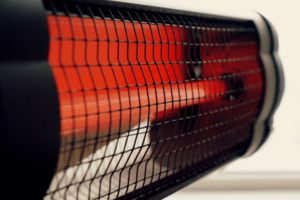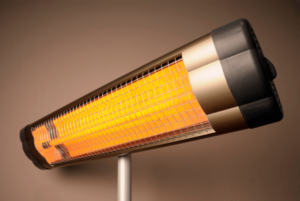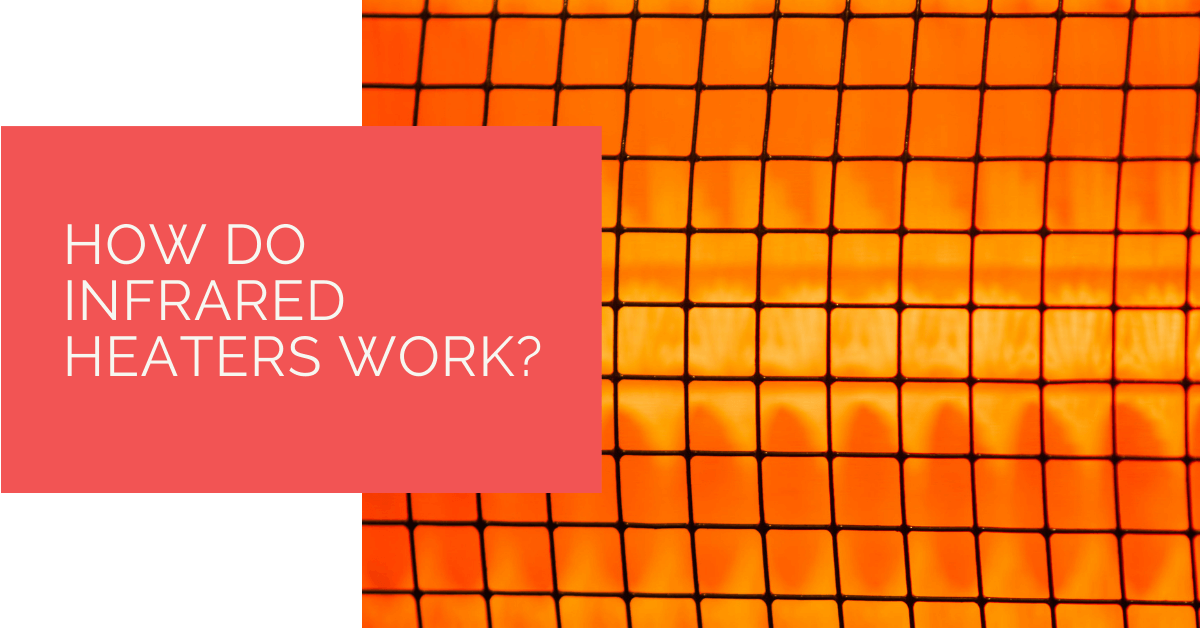A light source can produce many different wavelengths of energy. All of these wavelengths occupy different positions in the light spectrum. Moreover, only a small range of this spectrum is visible to the naked human eye.
What about the range that is invisible to the human eye? Even though light in this range cannot be seen, it is still present everywhere. For instance, infrared light, while too red for the naked eye to see, is emitted from warm-blooded animals, including humans.
Even though these wavelengths of light aren’t visible, they can still be used as energy sources.
Contents
Key Takeaways
- Infrared heaters emit infrared light, invisible to the human eye, but can still be used as an energy source to produce heat efficiently.
- Operating costs of infrared heaters are relatively low compared to conventional heaters, making them a cost-effective heating solution for specific areas.
- Infrared heaters come in two major types: low-intensity and high-intensity, each suited for different applications, and they are becoming popular in various settings, including warehouses and spas.
What are Infrared Heaters?
An infrared heater is a compact heater that uses infrared heating to warm its surroundings. Here, thermal energy is transferred through electromagnetic waves.
 An infrared heater transfers energy directly to the source, without heating up the air around the mentioned source. As a result, these devices are energy efficient and consume a lot less power than you’d expect.
An infrared heater transfers energy directly to the source, without heating up the air around the mentioned source. As a result, these devices are energy efficient and consume a lot less power than you’d expect.
The heat produced depends on the wavelengths produced by the electromagnetic spectrum. For instance, shorter wavelengths enable high frequencies and as a result, a higher heating temperature for the heater. But as requirements differ across various households, different types of infrared heaters are utilised.
The Cost of Operating
Infrared heaters use electricity to run. As a result, it is a common misconception that they consume a considerable amount of power. But that’s not true. These heaters are energy efficient and easy on the wallet.
Since these heaters are used for heating a specific area due to their limited range, they consume far less than average portable heaters. Let us look at some numbers provided by Greenage to prove this.
In this scenario, we make the following assumptions, on par with the average consensus:
- You’re keeping the heater on for a total of 5 hours a day;
- The standard cost of electricity in your area is 12.5p/kWh;
- A 0.4kW infrared heater is being used;
- The usage is for a total of 120 days, assuming that’s how long winter lasts.
Using the art of simple multiplication, the cost of running an infrared heater for an hour comes to £0.05! Therefore, running it for 5 hours would end up costing you just £0.25 per day.
If you compare this with a conventional heater, a 1kW heater would cost you around £0.15 for an hour. This totals up to £0.75 for one day.
Conclusively, it makes no sense to purchase a conventional heater if you don’t require the entire room to be heated. Instead, invest in a compact infrared heater and save some pounds!
What are the Types of Infrared Heaters?
You can purchase an infrared heater based on the intensity you require. For this purpose, infrared heaters come in two major types:
Low-Intensity Infrared Heaters
The tube surfaces hover around a value of 1100 degrees Celsius due to the hot gases that flow inside. This range counts as low-intensity. Low-intensity heaters are usually vented and utilise fresh air for the process of combustion.
They find consistent use in commercial warehouses and car washes. They can also be used as your own patio heater!
High-Intensity Infrared Heaters
 The temperatures touch a value of 1800 degrees Celsius in the tube surfaces. The combustion takes place on a tile surface made of ceramic. This heater utilises a direct fire operation, and the by-products of combustion are expelled into an area with adequate ventilation.
The temperatures touch a value of 1800 degrees Celsius in the tube surfaces. The combustion takes place on a tile surface made of ceramic. This heater utilises a direct fire operation, and the by-products of combustion are expelled into an area with adequate ventilation.
These heaters find a wide range of use in applications where high air change is required.
Additionally, infrared heaters can vary according to various other factors. Some of them include the power source, material used, or structure.
How do Infrared Heaters Work?
As the name suggests, infrared heaters use infrared rays of varying lengths to function. As you must know, infrared rays occupy a spectrum of light not visible to the human eye. The heat that is produced through these heaters is due to the same light.
An infrared heater works in a straightforward manner. The working is based on the principle of energy conversion. As you know, energy can be neither created nor destroyed. It just gets transferred.
Infrared heaters convert electrical energy to heat energy based on the energy principle. This process takes place in the infrared spectrum. As a result, heat is transferred from a place of higher temperature to one of a lower temperature.
The entire conversion process takes place in the infrared section, invisible to the naked human eye.
Heat Pump Source: Reliable Heating and Cooling Solutions
At Heat Pump Source, we take pride in our unwavering commitment to serving the UK with top-tier HVAC solutions. From the efficiency of heat pumps and the cool relief of air conditioning to the warmth of boilers, radiators, and underfloor heating, our dedicated team is always at the forefront of innovation. We understand the unique needs of every household and business, and we strive to provide dependable health and cooling products and services that are tailored just for you. Ensuring your comfort and satisfaction is our utmost priority. Whether you have questions, need guidance, or require support, we’re always here to assist. Please don’t hesitate to contact us; we’re eager to be of service.
Heat Pump Source: Reliable Heating and Cooling Solutions
At Heat Pump Source, we take pride in our unwavering commitment to serving the UK with top-tier HVAC solutions. From the efficiency of heat pumps and the cool relief of air conditioning to the warmth of boilers, radiators, and underfloor heating, our dedicated team is always at the forefront of innovation. We understand the unique needs of every household and business, and we strive to provide dependable health and cooling products and services that are tailored just for you. Ensuring your comfort and satisfaction is our utmost priority. Whether you have questions, need guidance, or require support, we’re always here to assist. Please don’t hesitate to contact us; we’re eager to be of service.
Conclusion
Unlike portable heaters, infrared heaters cannot be used for heating up an entire room. What they do offer is the ability to supply heat in the near vicinity. As a result, they can be placed near objects that require dedicated heating.
These heaters have witnessed a rise in popularity in large spaces. For instance, they are used in warehouses and factories to maintain the temperature of specific areas. A lot of spas have incorporated these heaters to use them for the human body.
Notably, as technology evolves, these heaters will find more specific applications. They might even evolve into more portable forms! Just clear out some space for them, and they’re easy to set up.
Make sure you get one for your home as soon as possible! After all, the winter months can be harsh and unforgiving.
About the Author
At Heat Pump Source, our articles are the product of a collaborative effort among a team of highly skilled HVAC experts. Our dedicated professionals, hailing from diverse backgrounds in heating, ventilation, air conditioning, and refrigeration, contribute their extensive knowledge and experience to every piece of content. This multidisciplinary approach ensures comprehensive coverage. Our commitment is to deliver authoritative, reliable, and tailored advice to meet the unique needs of every household and business across the UK.

